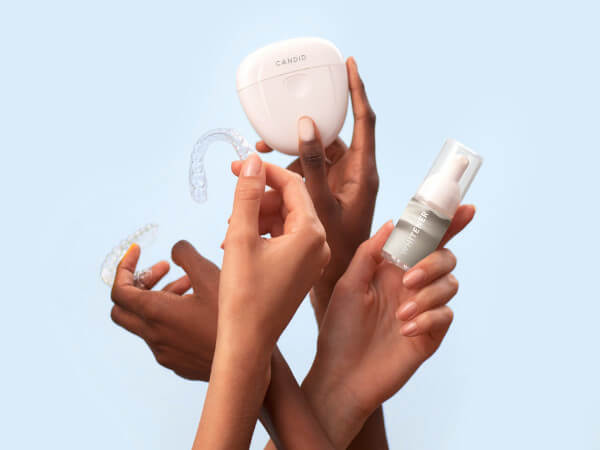While studying for my DATs about a decade ago, I remember being frustrated with the PAT section of the exam. Why would I ever need to know which asymmetrical and strange shape would fit into which hole? How would this be relevant to the practice of dentistry? As I passed time by working on a 2,000 piece jigsaw puzzle during a 12-hour overnight call shift at my GPR, I had a moment of clarity.

Dr. Khan
I am an imaginative person by nature. I have always found creative tasks like coloring, embroidering, or crocheting not only enjoyable but relaxing. However, my true passion lies in creating order out of chaos – my chaos of choice being jigsaw puzzles.
The first commercial jigsaw puzzle was made in 1762 by London-based mapmaker John Spilsbury, who mounted a map onto a wood basing and then cut around the borders of individual countries with a scroll saw. Throughout their early years, the primary goal of jigsaw puzzles was to help children learn geography. The invention of the “tredle jigsaw” tool in the early 19th century allowed for the creation of more intricate piece shapes and faster production.
During the Great Depression the popularity of jigsaw puzzles exponentially increased and allowed families a way to spend time with one another through problem solving while distracting themselves from daily hardships. More recently, during the COVID-19 pandemic jigsaw puzzles offered a quiet, inexpensive escape from the ever changing world during a global pandemic.
Oral health is multifactorial and only after a comprehensive medical, social and dietary history are we able to get the full picture of a patient’s oral health. Similar to a jigsaw puzzle, it is only after putting together the pieces that you are able to see the entire picture; in the case of dentistry, as a provider you can now tailor treatment and oral health recommendations to the specific patient. Moreover, jigsaw puzzles challenge our perceptual ability, color matching and pattern recognition and matching – a dentist’s dream! Puzzling allows me to achieve creative meditation and mindfulness through the marriage of the left and right sides of our brain.
I reaffirmed my love for puzzles in March 2020 when “elective dental procedures” were canceled in New York State. Our clinic schedule switched to weekly shifts covering emergency patients. I was anxious not only about the consequences of a global pandemic but also the impact it would have on my didactic and clinical education during my pediatric dental residency. Organized dentistry rose to the occasion and I was inundated with hours of online CE that allowed me to strengthen my clinical acumen. Yet, my hands remained fidgety. I wanted to create. But at the same time, I wanted to seek mindfulness. I found my nirvana through jigsaw puzzles. My hands were occupied with actively searching for the next piece while my mind was laser focused on the final picture.
Puzzling, much like many dental procedures, creates a unique sense of accomplishment. A little moment of success that only happens because of my efforts and achievements. The final picture of puzzles has evolved from antiquated landscapes to modern and vibrant pictures-capes depicting a wide variety of exciting and unique illustrations.
My favorite puzzle is the Clemens Habicht, 1000 Colors puzzle where each individual picture has been engineered to be its own distinct hue. While completing this puzzle I was transported back to my dental school days of trying to rearrange the VITA Classic Shade Guide by shade or brightness. When I encountered a roadblock with the hues of green I turned to an esthetic dentistry tip by photographing the pieces in black & white to aid in distinguishing them with no luck. Soon enough, the puzzle was complete – almost too fast. It remained on my kitchen table for a week after it was completed and put a smile on my face whenever I walked past it. Once that allure faded, I quickly disassembled and started on my new adventure: a 1,000-piece puzzle of a world map composed of flowers has since been framed and is hanging in my living room.
A year and a half later, we are still in a pandemic and the uncertainty of things becoming a constant, much like puzzles as my favorite mindfulness hobby. In the face of uncertainty in our lives, working on a puzzle is grounding while being nostalgic to a life unencumbered by the burdens of technology. I always have a puzzle in progress in the corner of my apartment as a reminder that no matter how small – each step forward brings you closer and closer to the end goal.
Furthermore, puzzling requires singular attention and can be an avenue to center yourself in the disarray of colors, patterns and shapes. More than ever, mental health is the cornerstone of a successful dentist and I encourage everyone to find a hobby that is the missing piece to their overall happiness and wellness.
Dr. Sarah Khan is a New Dentist Now guest blogger. She grew up in Long Island, New York and graduated Stony Brook School of Dental Medicine in 2016. While in dental school, she concurrently completed a Master’s in Public Health. She went on to complete her GPR at NY Presbyterian/Weill Cornell in 2017 and subsequently worked in Philadelphia, PA for two years. In the summer of 2019 she started her pediatric dentistry residency at Maimonides Medical Center in Brooklyn, NY. She is passionate about health advocacy and is always looking to get involved with organized dentistry on a local, state and national level. In her free time she loves to travel with her husband, complete 2000+ piece jigsaw puzzles and laugh.
